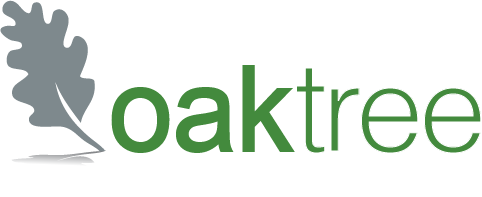Lead Generation: Insourcing vs Outsourcing
When it comes to lead generation, businesses have two main options: insourcing (handling lead generation in-house) or outsourcing (hiring a third-party service provider to manage it). Both approaches have their own pros and cons depending on the company's size, industry, resources, and goals. As what has traditionally been used as an outsourced agency you may be surprised that Oaktree don’t always advocate that lead generation be outsourced. In fact, more and more we typically work in a more hybrid manor where some functions are outsourced whilst other remain within the company. Below are the pros and cons of both methodologies:
1. Insourcing Lead Generation
Insourcing means the business manages all aspects of lead generation internally with its own employees and resources.
Advantages of Insourcing
Control & Customisation: Insourcing gives businesses complete control over the lead generation strategy. They can tailor approaches, adjust messaging quickly, and have direct control over the entire process.
In-depth Product/Service Knowledge: In-house teams usually have a deeper understanding of the company’s product, services, and value proposition, which can make for more personalised and targeted communications.
Long-term Strategy Development: Insourced teams are better positioned to build long-term, sustainable strategies for nurturing leads, tracking analytics, and making data-driven decisions.
Alignment with Sales & Marketing: In-house teams typically work closely with other departments, which can improve communication and alignment with marketing and sales efforts, leading to better overall lead qualification.
Disadvantages of Insourcing:
High Cost & Resources: Maintaining a lead generation team in-house requires significant investment in recruiting, training, tools, and technology. For smaller companies, this can be financially burdensome.
Time-Consuming: Building an effective in-house team and lead generation process can take time, both for recruitment and training. It’s a long-term commitment with upfront investment.
Limited Expertise: In-house teams may lack specific lead generation expertise, especially in areas like digital marketing, data analytics, or industry-specific trends. The team may need continuous training to stay updated.
Scalability Challenges: As the business grows, scaling lead generation might require additional hiring and technology investments, which can slow down expansion efforts.
2. Outsourcing Lead Generation
Outsourcing involves hiring a third-party agency or consultant to manage all or part of the lead generation process on behalf of the company
Advantages of Outsourcing:
Cost-Efficiency: Outsourcing is often more cost-effective for smaller businesses, as they don’t need to invest in recruitment, salaries, benefits, and training. You pay for a service rather than maintaining an entire in-house team.
Access to Expertise & Tools: Outsourcing gives businesses access to specialized knowledge and cutting-edge tools that might otherwise be out of reach. Lead generation agencies often have experience across industries and bring expertise in digital marketing, lead nurturing, and data analytics.
Speed & Flexibility: External lead generation agencies can start working immediately and scale up or down based on demand. They can also adapt quickly to changes in the market without the internal constraints of an organisation.
Focus on Core Competencies: Outsourcing lead generation frees up internal resources to focus on core business operations like product development, customer service, or sales.
Disadvantages of Outsourcing:
Less Control: When lead generation is outsourced, businesses have less control over how the process is managed. Communication issues may arise, and it can take longer to make adjustments to strategy or campaigns.
Quality Concerns: Not all third-party providers offer the same level of service. There can be discrepancies in the quality of leads delivered, and some companies may focus more on quantity over lead quality.
Lack of Personalisation: Third-party agencies may lack in-depth knowledge of the company’s culture, products, and services, leading to less personalized outreach or messaging.
Integration Issues: It can be difficult to align outsourced lead generation efforts with the company’s sales and marketing teams. This misalignment can result in confusion about leads’ status, follow-up, or qualification.
Conclusion: When to Choose Insourcing or Outsourcing
Insourcing is better suited for businesses that prioritise full control, personalisation, and long-term strategy, and that can afford the time and cost investment to build a high-performing internal team. It works well for companies with the necessary resources and the need for close alignment with sales and marketing.
Outsourcing works well for businesses that need quick results, want to save on operational costs, or lack the internal expertise for effective lead generation. It’s ideal for startups, small businesses, or larger companies that need to scale lead generation quickly without internal overhead.
Many companies also use a hybrid approach, combining insourced and outsourced elements to get the best of both worlds, such as having an in-house team handle lead nurturing while outsourcing the initial lead generation efforts. This can provide flexibility and efficiency while maintaining some control.
Thanks for reading.
Rich Waldron
If you would like to discuss this blog in more detail please get in touch at rwaldron@oaktreem.co.uk or use the Contact Us link at the top of the page.
